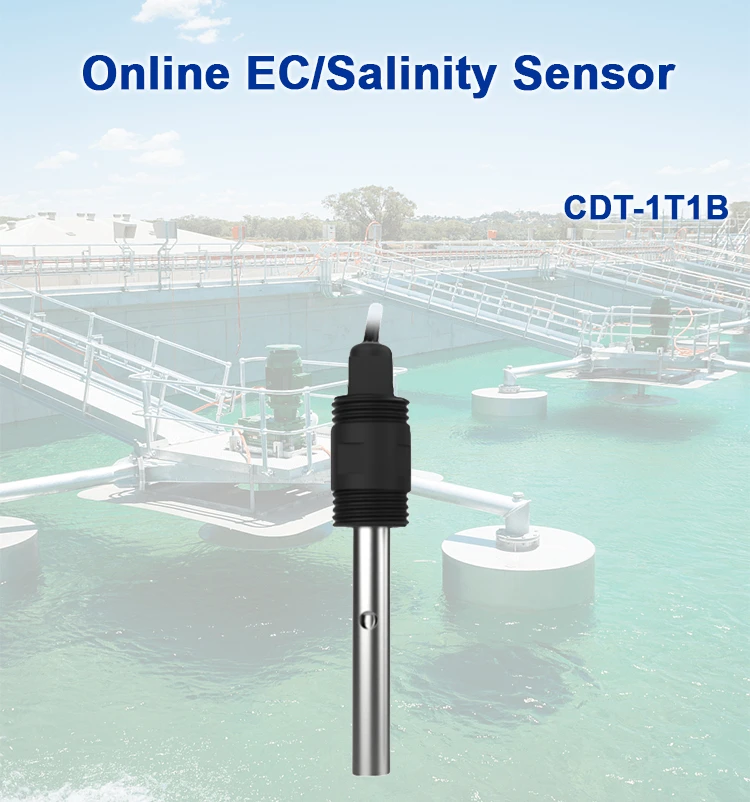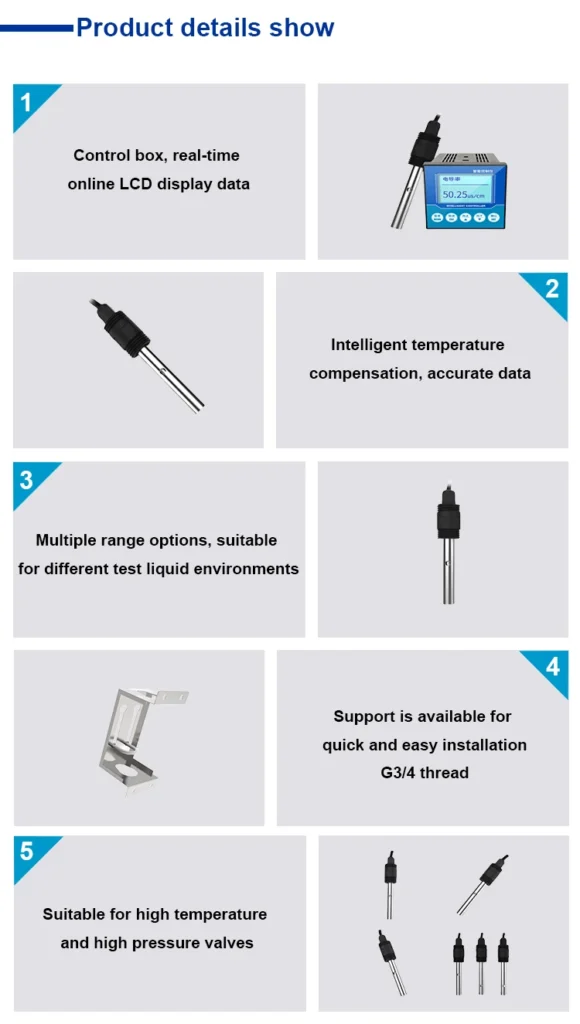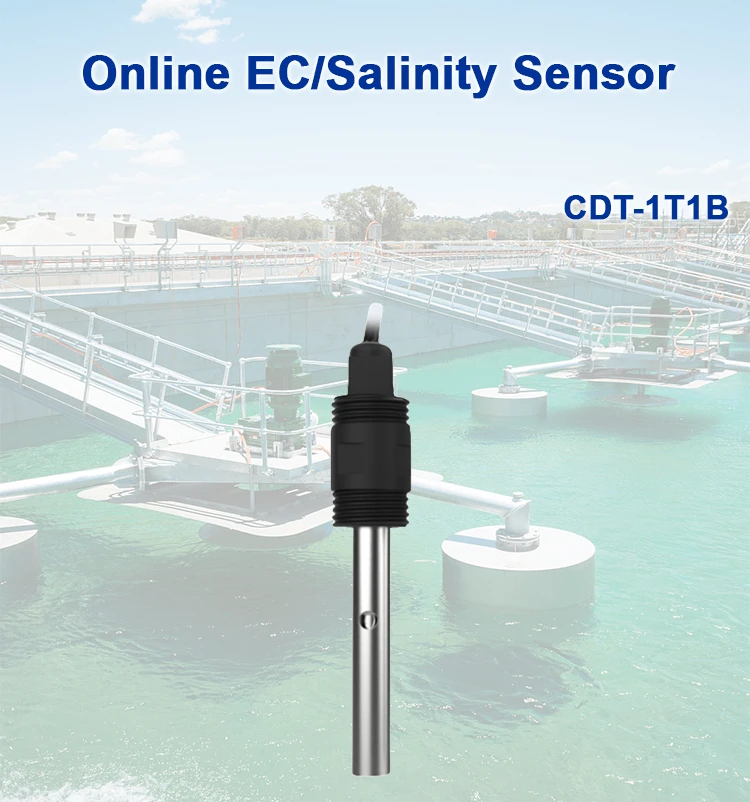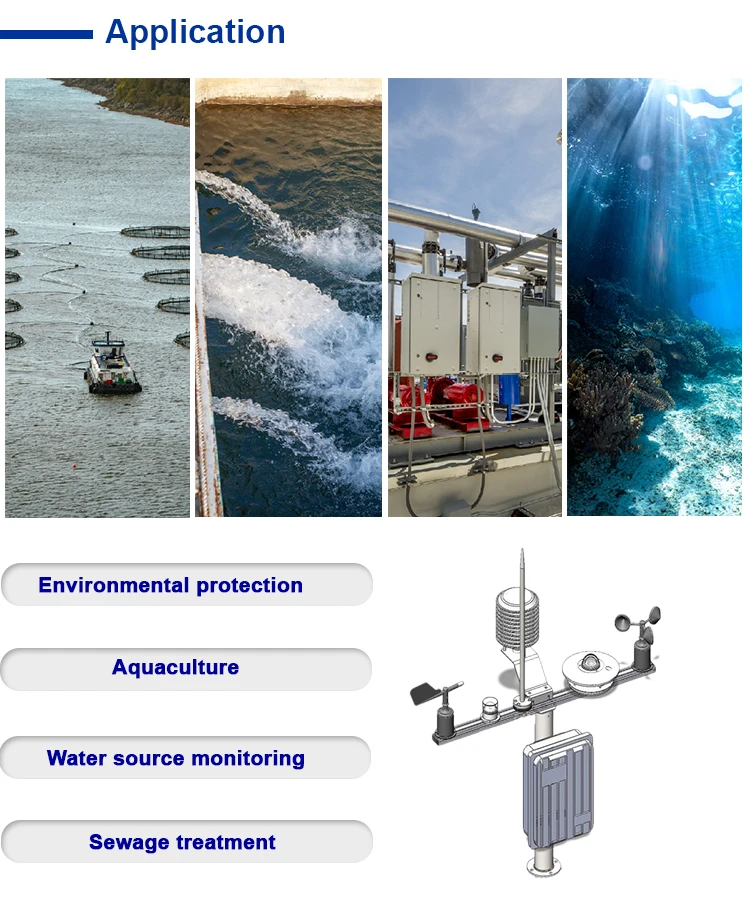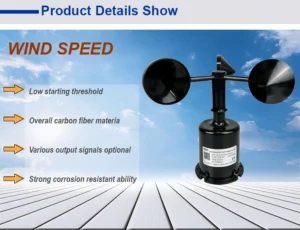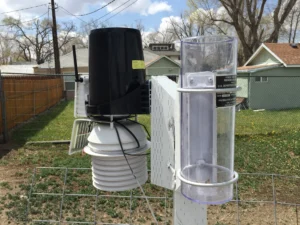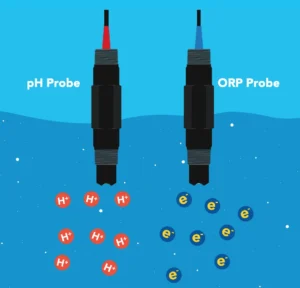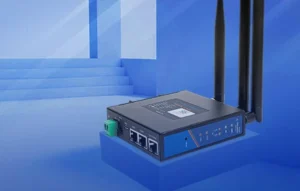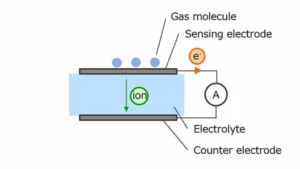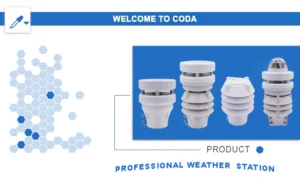How to Determine Electrical Conductivity from TDS
Are you aware that the Dead Sea’s electrical conductivity (EC) measures 200,000 µS/cm? It holds the title of the most conductive natural water body on Earth. The Dead Sea has a salt level of more than 34%. This shows a strong link between high total dissolved solids (TDS) and electrical conductivity.
In this discussion, we will look at the link between these two measurements. We will also look at how electrical conductivity sensors measure them well.
Our goal is to create a clear understanding of EC and TDS. These are two key factors for industries that rely on water. Industrial operations often need fast and accurate measurements of these indicators to ensure the best performance.
EC sensors provide quick and reliable estimates. However, getting higher precision and accuracy usually needs more work.
This guide will show you how to calculate electrical conductivity from TDS. It will also explain how to do the reverse. It will also show why these calculations matter for checking water quality.
1. The Link Between Water Quality and Electrical Conductivity
Water is essential for life on Earth. It is also a key resource for many industries. Water not only keeps living things hydrated, but it also acts as a universal solvent. This helps many chemical and industrial processes.
Water quality can mean different things based on its use. Drinking water with TDS levels between 100 and 500 ppm is safe for people to drink.
Industries like chip manufacturing need ultrapure water. They need total dissolved solids (TDS) to be as low as 1 ppm. This is much lower than what humans need.
This precision is achieved with EC sensors. They make sure the process water has low conductivity. To understand this need, let’s first look at the basic ideas of TDS and EC.
1.1. Total Dissolved Solids (TDS): A Basic Overview
TDS usually refers to water that people or living things use. Groups like the World Health Organization (WHO) set rules for safe drinking water.
They create these rules based on TDS levels. In factories, it is important to measure TDS using EC readings. This helps stop scaling, rust, and other issues.
1.1.1. What is TDS and What Does It Contain?
TDS shows how much organic and inorganic material is in water. This includes minerals, salts, metals, and ions. It is usually measured in milligrams per liter (mg/L) or parts per million (ppm).
An EC sensor can estimate TDS with a conversion factor. This calculation depends on what the liquid is made of. It may need careful checking to get the right results.
To get more accurate results, you can evaporate water from a 0.1-liter sample. You can use this to weigh the leftover solids.
1.1.2. Common Sources of TDS in Water
TDS levels in water can come from natural processes and human activities, such as:
– **Urban Runoff**: Rainwater that flows through cities often picks up dirt. This includes oil, fertilizers, pesticides, metals, and salts. These impurities raise the levels of total dissolved solids (TDS).
– **Industrial Wastewater**: Industrial operations often add chemicals to water systems. These include dyes, heavy metals, salts, solid particles, acids, and bases. This raises the total dissolved solids (TDS) in the water.
– **Piping Systems**: Plumbing materials, like metal pipes and fittings, can raise TDS. This occurs when they come into contact with water. This leads to corrosion and metal leaching.
– **Seawater**: Seawater has many types of salts. It usually has a total dissolved solids (TDS) level of around 35,000 parts per million (ppm).
– **Agriculture and Irrigation**: Fertilizers and pesticides add nitrates and phosphates to the environment. Using well water for irrigation can increase the salt levels in the fields. This can lead to higher TDS levels.
1.2. Understanding Electrical Conductivity (EC)
Electrical conductivity shows how well water can carry electric current. This ability is linked to the amount of inorganic and organic solids in the water. Higher levels of dissolved ions, like metals or salts, lead to higher EC readings. This makes EC a good way to check water quality.
1.2.1 Understanding Electrical Conductivity (EC)
Electrical conductivity is how well a material can conduct electricity. It is measured in microSiemens per meter (mS/m). Materials that can carry electricity are called conductors.
Pure water does not conduct electricity well. However, when you add dissolved solids, it can carry electric currents better.
Measuring EC uses special sensors. These sensors can be moved around for manual readings. They can also be built into systems for continuous monitoring.
These sensors usually have electrodes that are one centimeter apart. They pass a small electrical current through the liquid. The device checks the resistance between the sensor’s probes. This is directly linked to how well the liquid can conduct electricity.
1.2.2 Factors Influencing Electrical Conductivity
Many things can change the readings from EC sensors. These factors come from physical and chemical differences in the liquid. Key factors include:
– **Temperature**: When water temperature goes up, electrical conductivity increases by about 2% for each degree Celsius. Modern sensors adjust for temperature changes to ensure accurate measurements.
– **Ion concentration**: More ions in water raise the electrical conductivity (EC). These ions include sodium (Na⁺), chloride (Cl⁻), calcium (Ca²⁺), magnesium (Mg²⁺), and sulfate (SO₄²⁻).
– **Presence of organic matter**: Organic substances like oils reduce conductivity, as they are typically non-conductive.
– **Geological interactions**: Water that flows over limestone or rocks can absorb minerals such as calcium and bicarbonates. This changes its conductivity.
– **Instrumentation issues**: Probe polarization and interferences can cause wrong readings. New tools now use frequency conversion methods to lower these errors.
1.3 Relationship Between TDS and EC
Total Dissolved Solids (TDS) and Electrical Conductivity (EC) are closely related. You can estimate TDS by using EC readings and conversion formulas. However, many factors affect the correlation. We need to think about these to prevent errors.
1.3.1 Direct Relationship: More Ions Mean Higher EC and TDS
As electrical conductivity goes up, TDS also goes up. This is because both depend on the amount of ions present. In controlled industrial settings where dissolved solids are managed, this relationship gives accurate results.
In cases like wastewater or urban runoff, organic matter can raise TDS. It can also lower EC because some substances do not conduct electricity.
1.3.2 Limitations of Correlation Between TDS and EC
The link between TDS and EC depends on the situation and has important limits.
– **Conversion factor variability**: The ratio between TDS and EC changes based on the liquid’s ionic makeup. This makes it hard to use a universal multiplication constant in every case.
– **Non-conductive solids**: Dissolved materials such as sugars, alcohols, oils, and other organics can increase TDS. However, they may lower EC. This limits the usefulness of direct correlation in certain conditions.
– **Temperature influence**: Higher temperatures increase EC by boosting ionic activity. TDS stays the same because no extra solids are added.
– **Ion-specific effects**: Different types of ions affect electrical conductivity in different ways. Some ions can greatly increase conductivity, while others do not.
– **Salinity vs TDS**: In clean water systems, TDS is linked to salinity due to the main salt content. In polluted water systems with organic solids, salinity and TDS values diverge.
– **Impact of suspended solids**: Particles like clay, plastic, or sediment add visible solid content. They do not change the EC measurements. This disrupts the expected relationship.
Understanding these limits helps practitioners use the link between TDS and EC correctly. It also helps them avoid mistakes when other factors affect accuracy.
2. Determining Electrical Conductivity from TDS
2.1. The Conversion Ratio
To find electrical conductivity (EC) from total dissolved solids (TDS), you need a conversion factor. This relationship only applies when EC and TDS are directly related. It is important to understand the features of the water being tested for accurate results.
2.1.1. Understanding the K Factor
The K factor in the conversion formula shows the link between EC and TDS. Most TDS meters act like EC sensors. They check how well a sample can conduct electricity. Then, they use a formula to show results in ppm or mg/L.
2.1.2. Variations in the K Factor Across Water Types
The K factor differs depending on the water composition. Below are some examples of typical K values:
– **Seawater (~0.5 K):** It has a lot of NaCl, which conducts electricity well.
– **Groundwater (~0.65 K):** It includes ions such as calcium and magnesium that do not conduct as well.
– **Pure water (~0.7 K):** Fewer salts with higher amounts of bicarbonates and organic matter reduce conductivity.
2.2. The Formula
You can calculate electrical conductivity with this formula:
EC (µS/cm) = TDS (ppm) / Conversion Factor (K)
In most cases, EC meters or sensors have this equation built into their system. This allows them to adjust readings automatically for accuracy. They use external sensor data if it is available.
2.3. Factors Influencing Accurate Calculation
To get accurate EC measurements, you need to make adjustments. These adjustments help account for factors that affect the sensor readings.
2.3.1. Temperature Compensation
Electrical conductivity goes up when the temperature rises, but TDS stays the same. The conversion factor (K) needs to be changed to keep the EC-TDS relations correct at different temperatures.
2.3.2. Sensor Calibration
Regular calibration of EC sensors is necessary to ensure precision. Different manufacturers may suggest different calibration frequencies. Users can also set these intervals manually for the best performance.
Calibration means using reference solutions that have known EC and TDS values. This helps to check the sensor’s accuracy. The goal is for the meter to show values that match the standard solution during testing.
3. The Calculation Procedure
3.1. Assessing Electrical Conductivity
The first step is to get EC readings from the sample using the right equipment.
3.1.1. EC Meter
An EC meter can be used for both industrial and home purposes. It may have a built-in or removable probe. The meter shows direct readings on its display.
To get reliable results, mix the sample well. This helps it represent the whole sample. Then, insert the probe and follow the instructions in the device’s manual.
3.1.2. Online Electrical Conductivity Sensors
Online EC sensors allow for quick monitoring and control. This makes them great for industries like wastewater treatment and water purification. These sensors have features like temperature compensation and frequency conversion.
They reduce electrode polarization and interference issues. This ensures accurate results over a wide detection range of 0 to 200,000 µS/cm. Many modern probes can measure EC, salinity, and TDS at the same time. They provide outputs in analog (4-20mA) or digital (RS485) formats.
3.2. Choosing the Correct Conversion Factor
Selecting the appropriate conversion factor is crucial for translating readings accurately:
3.2.1. Identifying Water Type and Composition
Look at the type of water. This can be seawater, groundwater, or pure water. Then, choose a K factor based on its ion makeup.
3.2.2. Consulting Reference Tables
Reference tables can help find the right conversion factors for different types of water.
| **Water Type** | **EC to TDS Conversion Factor Range** |
| Pure water | 0.55 – 0.6 |
| Tap water | 0.5 – 0.7 |
| Groundwater | 0.65 – 0.7 |
| Seawater | 0.5 |
| Brackish water | 0.55 – 0.7 |
| Industrial wastewater | 0.55 – 0.7 |
3.3. Performing Calculations and Interpreting Results
Use the formula to find either EC or TDS using the data you have.
To get an EC reading, change it to TDS with the right K factor. You can also convert TDS values to EC in µS/cm using the same method.
4. Applications of Electrical Conductivity (EC) Sensors
4.1. Monitoring Water Quality
4.1.1. Evaluating the Quality of Drinking Water
To keep drinking water safe, it is important to check the EC and TDS values. The World Health Organization (WHO) suggests keeping total dissolved solids (TDS) at 300 parts per million (ppm). They also suggest that electrical conductivity (EC) should be less than 400 micro Siemens per centimeter (µS/cm).
4.1.2. Industrial Wastewater Monitoring
Industrial wastewater often has harmful substances that can harm living things. Keeping an eye on water systems online can help find and fix pollution problems quickly. In industries like mining and textile manufacturing, using EC sensors for real-time monitoring is very important.
4.1.3. Environmental Monitoring (Rivers, Lakes)
Monitoring the EC and TDS levels in rivers and lakes is important. These bodies of water are vital for ecosystems and communities. This monitoring provides useful information about water quality.
EC sensors allow quick and accurate measurements. This helps make sure the water is safe to drink. You need to use accurate conversion factors to get reliable results.
4.2. Agriculture and Hydroponics
4.2.1. Administration of Nutrient Solutions
Use approximately 12 words.
In farming, having the right balance of nutrients in water helps plants grow well. This brings both money and health benefits.
Measuring TDS and EC levels helps optimize nutrient mixtures for soil or hydroponic systems. This leads to higher productivity. EC meters and sensors provide an easy way to manage these solutions well.
4.2.2. Measuring Soil Salinity
Salinity meters are used to determine soil salinity levels. These meters are part of EC sensors. Modern frequency conversion techniques help sensors measure TDS, EC, and salinity better.
They change the way calculations are performed. This feature helps check soil health and improve farming results.
4.3. Industrial Uses
4.3.1. Monitoring of Boiler Water
Boilers in factories need good feedwater to work well and last a long time. High levels of dissolved solids can cause sludge to form. This can make the boiler work less well and cause it to last a shorter time.
EC sensors in feedwater systems are important. They help check and keep boilers healthy in power plants and other places.
4.3.2. Chemical Process Control
In industries like textiles, food processing, and beverages, it is important to keep steady EC and TDS levels. This helps maintain process stability. Changes in these measurements can affect product quality.
They can also increase waste and reduce efficiency. EC sensors play a key role in monitoring things in real-time. They help make processes accurate and lower disruptions in operations.
Final Thoughts: Calculating EC from TDS Using EC Sensors
To measure electrical conductivity (EC) and total dissolved solids (TDS), use an EC meter. You can use an online sensor to get accurate readings. You can convert these values using specific formulas. You need to think about several factors during the conversion.
Several factors can affect the conversion process. These include temperature, ion composition, types of solids, water type, and organic content. By looking at these factors, users can easily calculate EC or TDS. They can do this with a simple EC sensor.
For advanced solutions with great detection and high accuracy, visit the Coda website. There, you can explore the CDT-1T1B Coda Online Electrical Conductivity (EC)/Salinity Sensor.
The Coda sensor uses new technology to measure TDS, EC, and salinity. It gives accurate readings for various uses. We hope this guide and Coda’s new products help you reach your goals easily!
